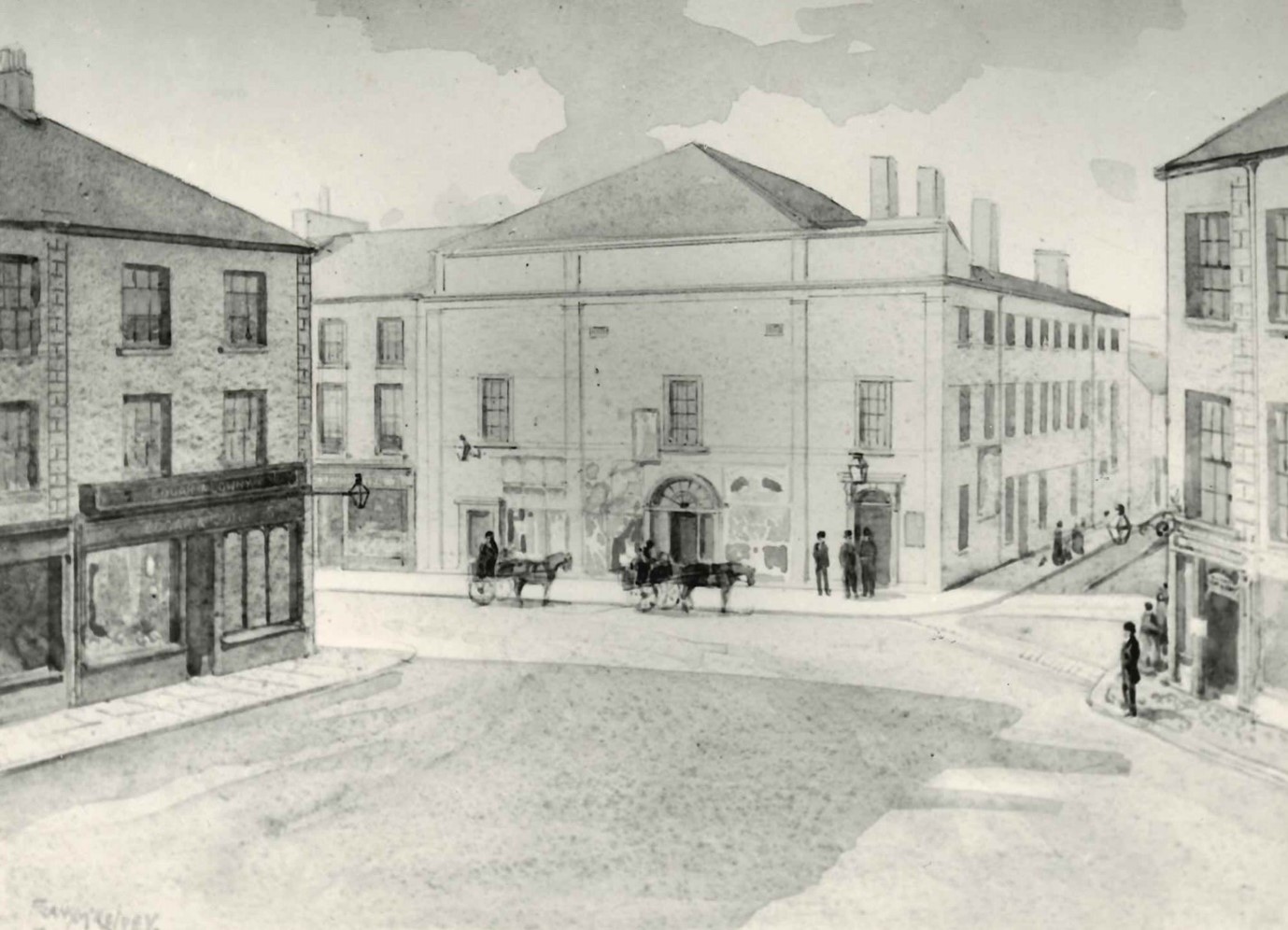Alexander Riddell and Early Belfast Theatre
Historians interested in the social life of Belfast owe a debt of gratitude to journalist Alexander Riddell. Originally from London, Riddell was a freelance journalist who settled in Belfast where he worked at the Northern Whig newspaper from 1902 to 1952 as a literary editor and assistant editor. He wrote about Ulster social history and was one of the of the first people to broadcast on the BBC in Northern Ireland, where he gave talks on Ulster social life and customs. During this time he became an encyclopaedist gathering information that was helpful for his articles, but he also collected information for his own interest. These interests included stage-coaching in Ulster, bibliographies of prominent citizens, transcriptions of speeches and press cuttings, and this invaluable collection was subsequently donated to Belfast Central Library.
One significant part of Riddell’s collection covers the history of Belfast’s Theatre Royal from the 1860s to the 1870s when it was managed by Joseph Warden (1836 – 1898). Riddell was also interested in actor Michael Atkins (1747 – 1812), a Dubliner who built his career in Belfast’s early theatres, but who set his sights higher and who eventually managed some of Belfast’s most popular theatres.
Entertainment had always been part of Belfast social life with theatre and music halls adding to its vibrant social scene. Belfast’s first main theatre was the Market House (1639-1810) which doubled as town’s main public hall. It saw performances by famous Welsh actress Sarah Siddons whose acting was described in a letter by a Mrs McTier as ‘so powerful that in the last act of The Unhappy Marriage, ladies were taken out fainting and hardly a man could stand it’. Five primary theatres subsequently emerged over the course of the 18th century, all were associated with Michael Atkins and these helped put Belfast theatre on the map.
The Vaults (1749-1769) was located in a tenement building in Weigh House Lane, its demise probably came at the hands of the popularity of the Mill Gate Theatre (1768-1788) which had opened in Millfield. Located in what was initially a prestigious building, the theatre enjoyed the patronage of the Donegall family. This is the first theatre in which Atkins, already an established actor, is recorded as performing, playing the King in The Miller of Manitoba and eventually the lead in Romeo and Juliet. The theatre displayed the strong philanthropic tradition that ran through Belfast’s early theatre and society scene, hosting charity events and donating the proceeds to the poor. It was also the setting for The School for Scandal, a masterpiece by Richard Sheridan that was a Belfast favourite right into the 19th century.
Atkins stepped away from the Mill Gate Theatre as it declined and took up residence in the Ann Street Theatre (1778-1792). It delivered the usual combination of comedy, farce and tragedy and was patroned by the town’s sovereign, Mr. George Black. However, it was a small theatre and when Atkins saw it start to decline he longed to manage a theatre of his own. He made an appeal for subscriptions to buy a plot of land to build his own theatre. He achieved this building the Rosemary Lane Theatre opposite the First Presbyterian Church in Rosemary Street. It was in this theatre (1784-1793) where he was to secure names like Lee Lewes from Covent Garden and tragedienne Sarah Siddons whose fee was 40 guineas a night. Atkins himself continued to act in his theatre but set his sights even higher.
Atkins’ next venture was to manage Belfast’s first large auditorium raising £2,000 to resurrect a pre-existing theatre on Arthur Street that would become the Theatre Royal. He had a preference for serious drama performed by top stars and welcomed performers like Mrs Siddons and Mr Lewes who he had engaged before. Atkins’ career in Belfast Theatre ended in 1809 and after this a series of managers took over. They continued the theatre’s success as the largest and most popular theatre in Belfast, catering to high demands of the town at the time. Belfast’s Grand Opera House, built under J.F. Warden during the final years of the Theatre Royal, survives today, standing as a monument to the legacy of stage entertainment in Belfast.

